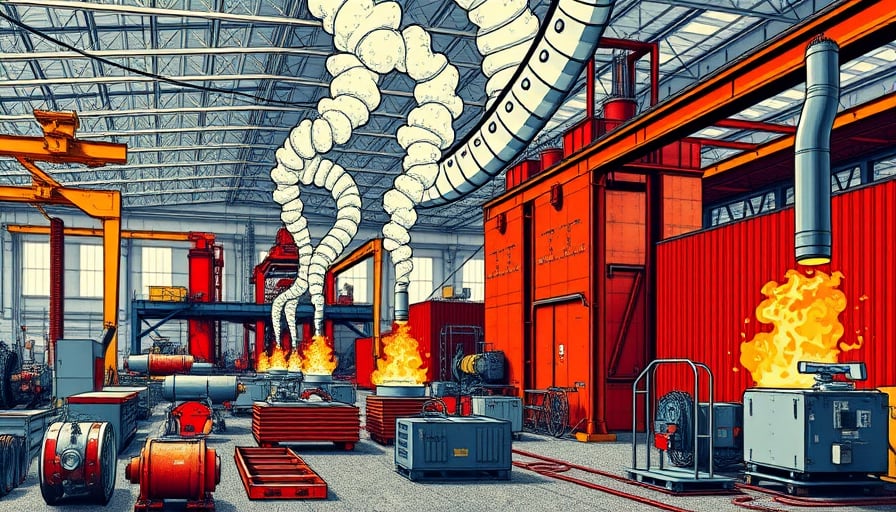Inner Mongolia BaoTou Steel Union Co., Ltd – Strategic Positioning Amid Rising Rare‑Earth Costs
Inner Mongolia BaoTou Steel Union Co., Ltd (股票代码 600010), listed on the Shanghai Stock Exchange, is a vertically integrated steel‑materials producer headquartered in Baotou. The company’s core competencies span the smelting, processing and distribution of a broad portfolio of ferrous metal products—including steel plates, seamless tubes, heavy and square steel, wire rods, steel pipes, and steel scrap—alongside import‑export logistics. As of 2025‑10‑09, the stock traded at CNY 2.54, with a 52‑week high of CNY 2.99 and a 52‑week low of CNY 1.56, reflecting the sector’s cyclic volatility.
1. Market Dynamics: Rare‑Earth Pricing and Cost Implications
The past week has seen a sharp upward swing in rare‑earth ore prices, driven by a 37.13 % year‑on‑year increase for fourth‑quarter contracts. The most recent announcement from the state‑owned North Rare Earth (600111.SH) and its affiliated BaoTou Steel Union raised the fourth‑quarter rare‑earth ore price to CNY 26,205 per ton (dry basis, REO = 50 %). This adjustment follows a 50 % increase in the REO index and aligns with the company’s 2022 shareholder‑approved pricing formula.
For a steel producer such as Inner Mongolia BaoTou Steel Union, rare‑earth alloys are pivotal in producing high‑performance steel grades, notably in rail‑track applications where heat‑treated, rare‑earth‑reinforced rails deliver superior wear resistance. The price escalation directly inflates the cost of alloying, potentially compressing margins on high‑end product lines. However, the company’s established long‑term contracts with key rare‑earth suppliers mitigate short‑term volatility, and the recent procurement of a 1.52 billion CNY contract for the national railway’s second batch of rail‑track projects (as reported on 2025‑10‑10) positions the firm to capitalize on the premium pricing environment.
2. Revenue Trajectory and Profitability Metrics
Financial snapshots indicate a nuanced performance profile. While 2024 revenue dipped by 3.51 % to CNY 68.089 billion, the company rebounded in the first half of 2025, recording an 11.02 % decline in revenue (CNY 31.329 billion) but a robust 39.99 % increase in net profit (CNY 1.51 billion). The profit surge reflects improved operational efficiency and the premium pricing of high‑grade products, offsetting revenue compression. Nevertheless, the P/E ratio of 353.64 signals market expectations for accelerated earnings growth, underscored by the company’s sizeable market capitalization of CNY 107.79 billion.
3. Strategic Leveraging of Rare‑Earth Expertise
Inner Mongolia BaoTou Steel Union’s proprietary rare‑earth alloying technology—evidenced by the successful bid for the national railway’s core steel‑track segment—provides a competitive moat. The company’s integration with local rare‑earth mining clusters in Inner Mongolia offers a supply‑chain advantage, allowing it to secure high‑grade ores at negotiated rates. Moreover, the 2025‑10‑10 announcement of the 1.52 billion CNY contract with China Railway Material Co. underscores the firm’s ability to translate its technical prowess into tangible revenue streams.
4. Forward‑Looking Outlook
- Cost Management: With rare‑earth prices set to remain elevated, the firm must continue to optimize alloying processes and negotiate fixed‑price agreements to preserve margins.
- Product Diversification: Expansion into specialty steel products—such as high‑strength, low‑weight alloys for automotive and aerospace—will diversify revenue and reduce reliance on rail‑track contracts.
- Sustainability Initiatives: Investing in recycling of steel scrap and low‑carbon smelting technologies will align the company with global decarbonization trends, enhancing its appeal to institutional investors focused on ESG metrics.
- Geopolitical Resilience: The strategic location in Inner Mongolia offers proximity to both domestic and international markets, mitigating trade‑policy risks.
In summary, Inner Mongolia BaoTou Steel Union is positioned at the nexus of high‑end steel production and rare‑earth alloy technology. While recent price hikes present cost challenges, the company’s contractual depth, technical leadership, and proactive supply‑chain strategies equip it to navigate the cyclical nature of the materials sector and pursue sustainable, profitable growth.
